

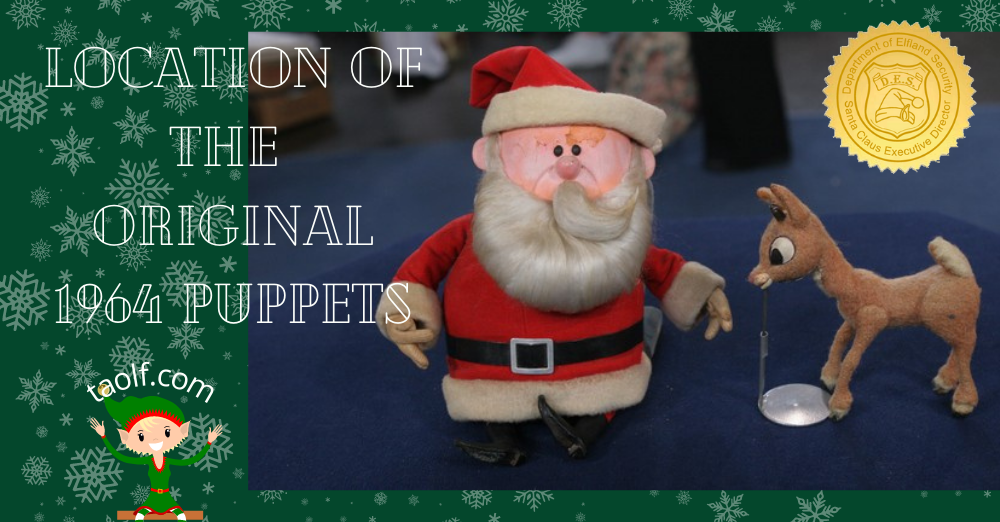
Unfortunately, the original puppets from the 1964 TV special, Rudolph the Red Nosed Reindeer are all but destroyed with the exception of Santa and Rudolph which surfaced again in 2005 on the popular PBS TV show, Antique Roadshow. They are now available to be seen fully restored in a museum in Atlanta, Georgia.
Rudolph the Red-Nosed Reindeer is a 1964 Christmas stop motion animated television special produced by Videocraft International, Ltd. (later known as Rankin/Bass Productions) and currently distributed by NBC Universal Syndication Studios. It first aired Sunday, December 6, 1964, on the NBC television network in the United States and was sponsored by General Electric under the umbrella title of The General Electric Fantasy Hour. The special was based on the Johnny Marks song "Rudolph the Red-Nosed Reindeer" which was itself based on the poem of the same name written in 1939 by Marks' brother-in-law, Robert L. May. Since 1972, the special has aired on CBS; the network unveiled a high-definition, digitally remastered version of the program in 2005.
Once the script was written, and the voices were recorded (in Canada), and the music was recorded (in England), Rankin and Bass contracted MOM Film studio in Tokyo Japan for the actual production of the film. The film was recorded with a special stop motion process using wooden puppets where 24 images were taken for each second of the film. This technique was developed and perfected by Tadahito "Tad" Mochinaga.
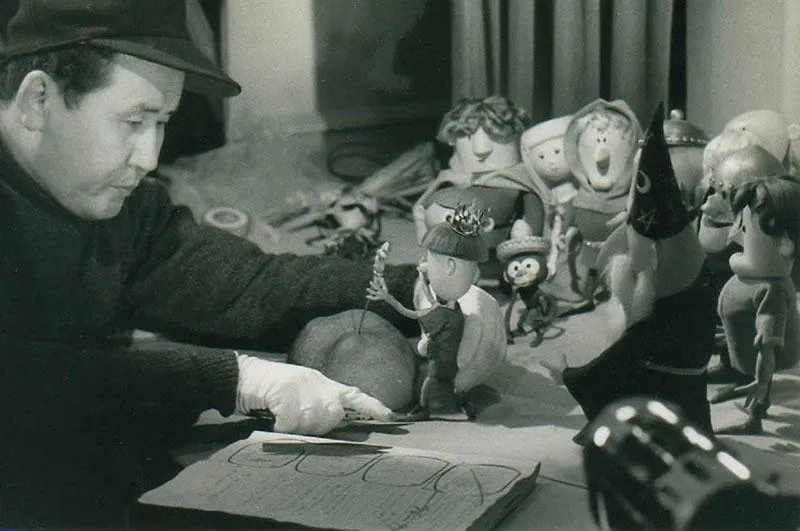
Tad Mochinaga works on the set of Rankin/Bass' Willy McBean and His Magic Machine in 1965. @ 2001 Miser Bros Press/Rick Goldsch4midt Archives
Arthur Rankin supervised the production in Japan while Jules Bass was responsible for the production outside of Japan. It was rare for people working on Rudolph to see both men together.
Working from scripts provided by Rankin/Bass, Mochinaga directed the production featuring 22 handmade sets, all built to scale for the cast of four-inch puppets crafted by designer Ichiro Komuro.

Hiroshi Tabata works on Charlie-in-the-box in Animagic, on the set of Rankin/Bass' Rudolph the Red-Nosed Reindeer in 1964. @ 2001 Miser Bros Press/Rick Goldschmidt Archives
Prior to filming, Mochinaga traveled to Nara, Japan, a small city located east of Osaka, with his assistant, Hiroshi Tabata to visit Nara Park, a deer sanctuary established in 1880 to protect the area’s population of sacred deer. The Nara deer approach visitors, nibble food from humans, and mimic human bowing. While there, the pair spent two days observing the deer roam freely through the sprawling park and their interaction with visitors. They used their observations to craft details that are visible in the animation itself, such as delicate eyelids crafted from leather and subtle movements.
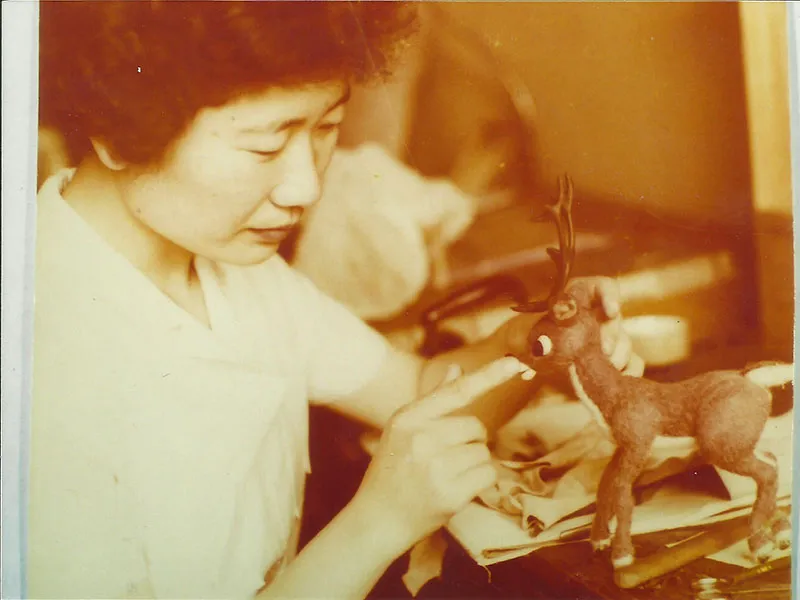
Kyoko Kita makes Rudolph in Animagic in 1964. © 2001 Miser Bros Press/Rick Goldschmidt Archives
Thus, the original puppets created for the movie where made by designer Ichiro Komuro, from Nara, Japan.
Following production in Tokyo, the puppets were housed at the Rankin/Bass Productions offices in New York where Rankin/Bass used the puppets for various marketing promotions for the film; until the early 1970s when they were passed down to a series of owners.
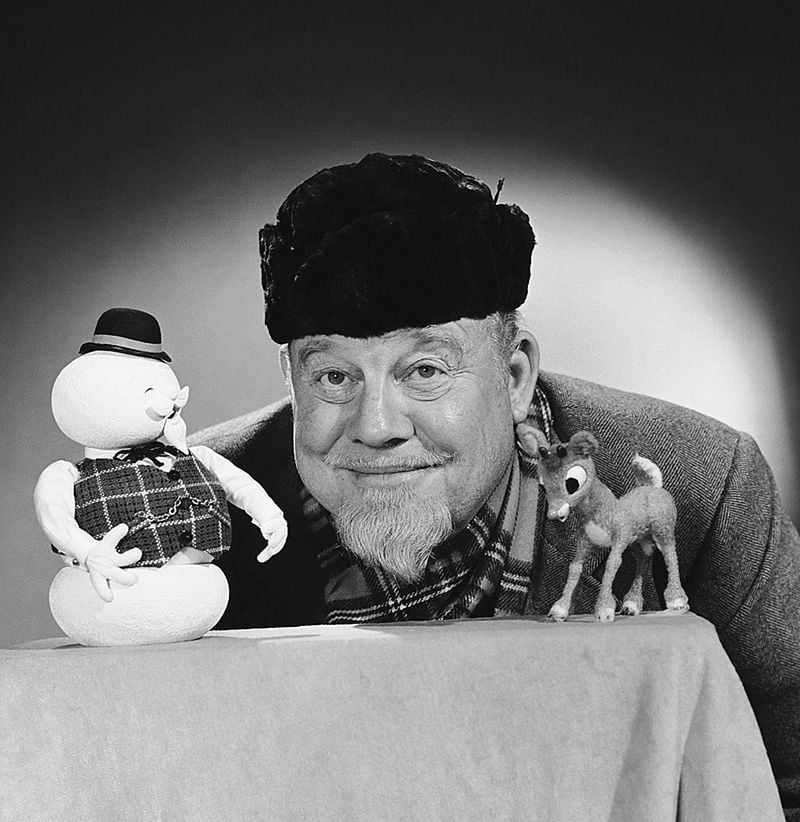
Rankin/Bass Productions publicity shot of BURL IVES with his ANIMAGIC counterpart SAM THE SNOWMAN and RUDOLPH THE RED-NOSED REINDEER himself from the RANKIN/BASS TV MUSICAL SPECTACULAR 'RUDOLPH THE RED-NOSED REINDEER' New York City, circa. 1964
At some point in the 1970s, the puppets came to Barbara Adams, a longtime secretary at the production company (Rankin/Bass) that made the film. Producer Arthur Rankin, Jr. himself gifted her the puppets. She used them as decorations around the Christmas tree, and the house, and let her nieces and nephews play with them. The puppets stayed with her family for almost 40 years.
The picture below (from the Time and Space Toys website) shows Rudolph sitting in a candy dish as a Christmas decoration.
Most of the figures ended up melting in a hot attic, but Barbara's nephew brought the survivors, Santa and Rudolph, to the Antique Roadshow in Providence, Rhode Island in 2005, where they were valued at $8,000 to $10,000. This was a shocking discovery since most people, including those form Rankin/Bass thought that all of the puppets were long gone.
A toy aficionado, Kevin Kriess, owner of Time and Space Toys, purchased the puppets—reportedly for quite a bit more than that appraisal. In the interview below, Kevin and his wife discuss how they had the puppets in the Pittsburg area at a toy expo where children (and parents) could come and get their photo taken with the puppets.
In the previous video, Kevin mentions the restoration of the puppets. He reportedly invested another $4,000 to have the rare collectibles painstakingly restored by a team from stop-motion animation studio Screen Novelties and Atlanta’s Center of Puppetry Arts. Before that, Rudolph had lost his nose, and Santa was missing half his yak-hair mustache.
In 2008, Peter Lutrario of Staten, Island purchased the dolls after he tracked down the person who bought the puppets (Kevin Kriess) that had been featured on the PBS TV show “Antiques Roadshow†in 2005. Acquiring memorabilia was second nature to him.
"I’ve collected my whole life," said Lutrario, citing his fascination with baseball cards, vintage comic books, superhero stuff such as Superman costumes and even a Batmobile.
But the Christmas-special characters, “that was my ultimate collectible, my greatest accomplishment, no question about it,†he said.
In fact, Lutrario traded most of his precious Superman collection so he could obtain the puppets, but claimed it was worth it.

There was an article that was posted on Entertainment Weekly December 21, 2017, that mentioned that Lutrario listed the dolls on eBay for $10 million dollars. You can read about that article here. It is not certain why he listed them for so much, but they did not sell. Maybe it was from so many other collectors bothering him trying to purchase the dolls.

In November of 2020, Lutario puts the dolls up for auction again, but this time used the firm of Profiles in History in Los Angeles. This auction was well advertised and many collectors around the world were looking forward to the auction. The restored original puppets were to sell together for an estimated $150,000 to $200,000 dollars. But like with any auction, you really never know exactly what the selling price will be in the end.

There are many articles and videos on the Internet that came out before and after the auction, and a lot of them have some of the details incorrect. For example, one video from a very prominent news station says that Lutario purchased the dolls directly from Barbara Adam's nephew after the Antique Roadshow episode was aired, leaving out Kevin Kriess and his wife. Another one mentioned that Rankin/Bass created the puppets for the film, leaving out the original designer Ichiro Komuro from Japan. In reality, Rankin/Bass were the producers of the film.
So, where are the puppet's now? Well, they did sell at auction in 2020 for a whopping $368,000 (including fees and taxes) to an anonymous bidder. The new owner of the puppets has realized that these historic prize possessions belong in a museum, and that is where they are at. The owner has lent them to the Center for Puppetry Arts in Atlanta, Georgia where they are on display in their museum.
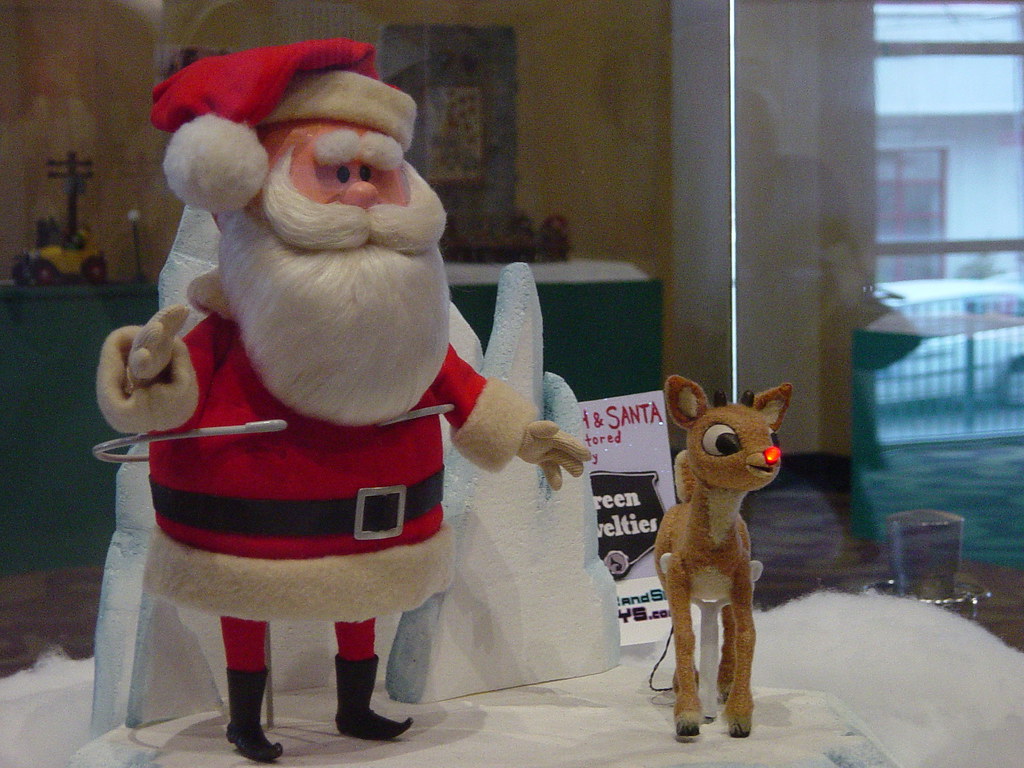
The next time you are in Atlanta, stop by and take a look.